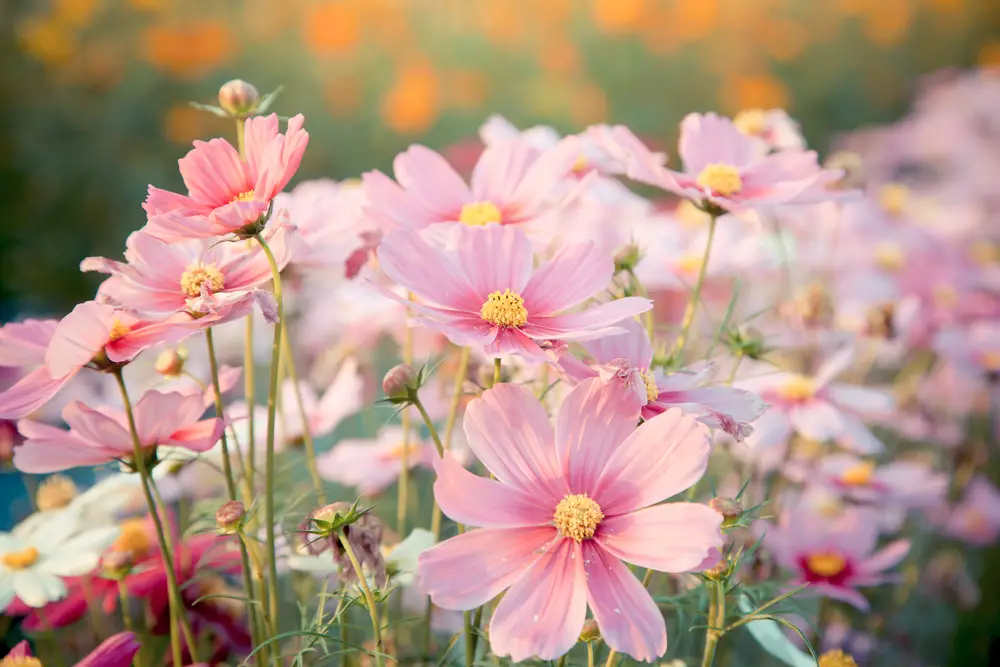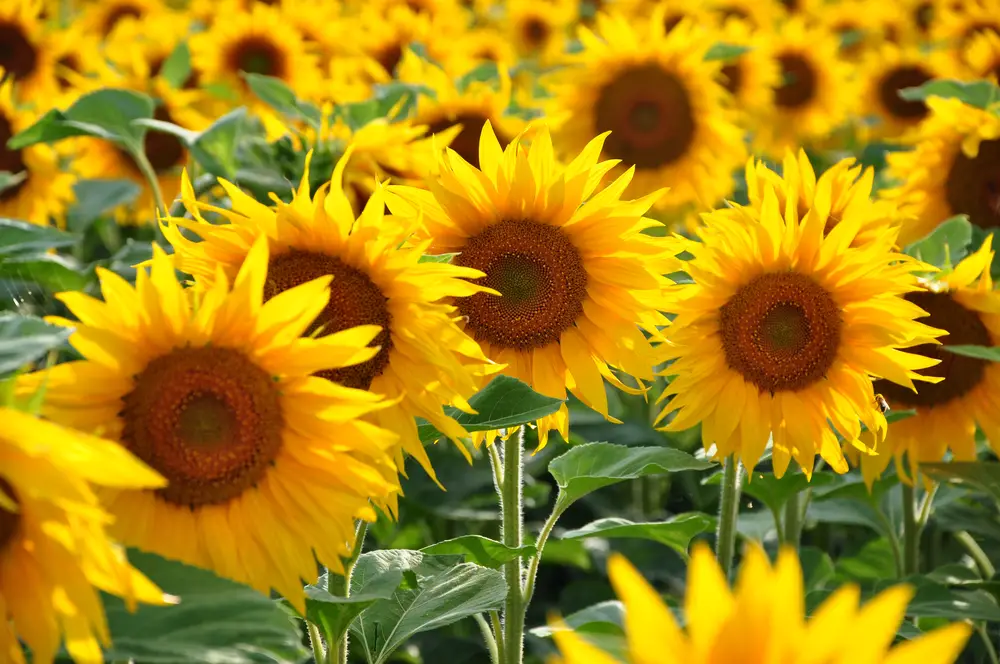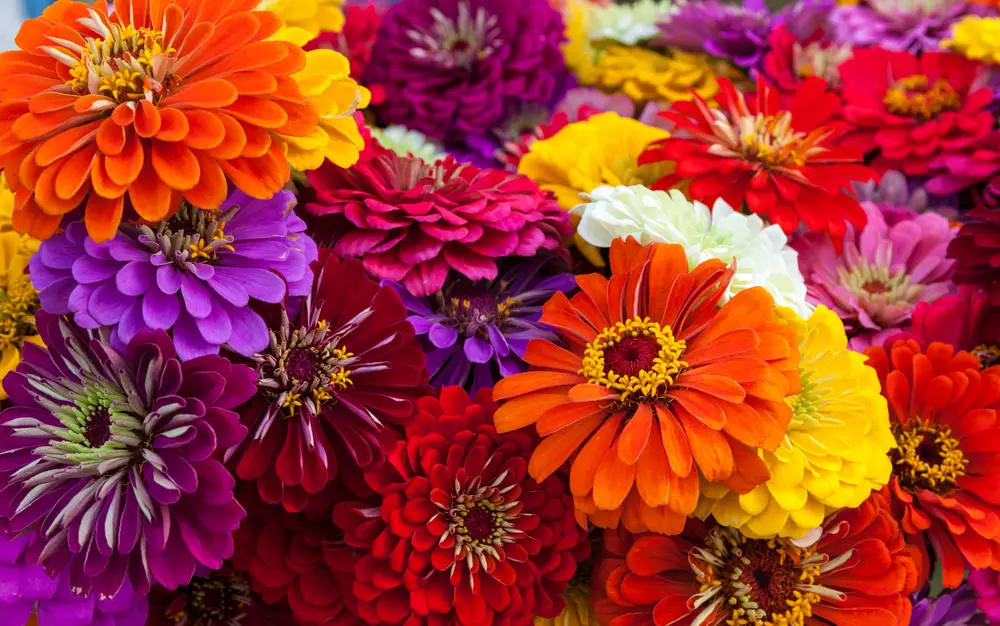Summary
Annual plants are plants that live for one year.
Identifying annual plants comes down to memorization. The more familiar you become with them, the more you’ll recognize them.
Caring for them is similar to caring for other plants. However, your mindset has to shift: anything you do will only keep them alive and healthy for that growing year. Once winter hits, they won’t return.
Annual plants are a must-have for any garden! Their striking appearance adds a distinctive touch and is perfect for pots or flower beds. But just what are annual plants, and how do you take care of them?
What Are Annual Plants?

Plants that live for one year are annual plants (annuals). They grow from seeds, produce leaves and flowers, and then create new seeds before dying.
Annual plants are different from biennial and perennial plants in this way. However, there are arguments to be made about which plant is better.
Gardeners usually start planting seeds in February or March to prepare for the upcoming growing season. People often start the process indoors at the beginning of the year and collect seeds to grow more the following year. It takes around six to eight weeks for the plants to mature.
Nearly all annual plants are herbaceous (without wood), fast growers, and grow better in soft soils. While flowering annuals are among the most popular kinds, other annual plants grow and reproduce not so much for their flowers but because of their exotic leaves or shapes.
How Do You Identify An Annual Plant?
Annual plants have no signs of previous growth. They look fresh and usually do not require any pruning work. Annual plants look good with all their blooms or extensive growth as early as April.
The best way to identify annuals is through memorization. When I first set my eyes on a rhododendron, I mistook it for a tropical annual, but I soon discovered it was a hardy perennial flowering shrub.
Not all annuals have striking looks or thick foliage, though, and they may not be readily available at your local nursery during the springtime.
When visiting garden centers and greenhouses, paying attention to how they market plants is crucial. Flashy annuals in colorful plastic pots are the norm. At the same time, perennials, biennials, trees, and shrubs are typically found in either a white pot marked with “Proven Winners” or a black or monochromatic pot.
Remember that growers may provide only basic information about annual plants, but perennials usually have detailed labels indicating their hardiness zones, sizes, light requirements, and flowering periods. This information is invaluable when deciding which plants to purchase for your garden, so note it.
As you explore the fascinating gardening realm, you will learn more about annuals and other types of plants.
How To Care For Your Annual Plants

Like all plants, annuals require light, water, and nutrients in their soil to survive. The extent of the resources needed to flourish differs by plant species. For example, certain annuals may demand extra fertilizer to prolong their blooming season or expedite their growth.
Regardless, the first thing to do is to consider where you’re planting your annuals.
Consider Where You’re Planting Them
When taking care of annual plants, it is vital to consider two main environmental types. The most common environment for annuals is potted plants, such as hanging baskets, raised garden beds, and other containers.
The second environment type is in a garden, where annual plants require less watering than potted plants. However, if you expose your plant to more than six hours of sun or sandy soil, daily or even multiple watering sessions may be necessary.
You’ll need to consider spacing for either environment type. Containers will have less space, but you can dedicate the entire container to your annual plant. On the other hand, gardens will have more space but require considerations for other plants. In some cases, gardeners have annual plants clustered together with other plants to make a more significant impression.
Give Them What They Need
Good drainage, a light potting soil mix, small amounts of summer fertilizer, and a consistent watering schedule are necessary to ensure the well-being of annual plants.
Soil Needs
When planting annuals in pots, it is imperative to use black earth or loam, a balanced mixture of sand, silt, clay, and soft organic matter.
Animal manure may be too heavy for annuals, so using a worm-casting potting mix is a highly recommended alternative. Some good soil ingredients are sphagnum, tree bark, coir, perlite, vermiculture, sand, and worm castings.
Most manufacturers prepare and label commercial soils, making planting significantly easier. Choose container soil mix when dealing with pots and garden soil when preparing garden beds; each soil has its own blend of particles, matter, and other ingredients.
Drainage Needs
Drainage is a crucial but sometimes overlooked necessity in most gardens. Observe if your garden retains lots of water from the rain or sprinkles. See if you are under or over a slope or have dense clay soil.
Regarding outdoor pots, annual plants need a pot with holes in the bottom for good drainage. Add a layer of drainage stone at the bottom of your pot’s soil to accelerate the exit of water saturation while watering.
Testing soil drainage requires digging a hole one foot wide by one foot deep. You fill the hole with water. Measure how fast it takes for the water to drain. Then, you’ll know whether you have well-draining soil or not.
Fertilizer Needs
I’ve noticed my annual plants grow rapidly with minimal fertilizer. Nevertheless, when I fertilize them, I exclusively use direct fertilizer (water-soluble fertilizer) since it yields faster results than slow-release fertilizers.
For blooming plants, seek a fertilizer with a more significant proportion of phosphorus (the second number in the formula) than the other two numbers (such as 10-52-10). If I want my plants to be more vibrant, I select a fertilizer with more nitrogen or phosphorus (the first or last number), like 12-4-8.
Consider How And When To Plant Them
Plant your annuals in May. Depending on your region and weather, try to plant your annuals when there is no longer the possibility of frost at night.
Dig a hole the same depth as the plant’s pot soil, make it slightly wider, and then refill the ground with new or the dug soil. Remember to remove the plastic pot before planting; some pots are made of organic fabric, and you can plant them directly in the ground. Water after planting and press the soil firmly with your hands (with gloves) around the plant.
Use light-mix soil, water regularly, and fertilize moderately during summer. Consider the size of your planting site and the surroundings, be creative, and blend textures, shapes, and colors.
Water Them
Many annuals might require water daily, but it depends on soil, light exposure, temperatures, and plant species. One practical watering method for potted plants consists of drip irrigation lines you can insert behind the pots to deliver water to the pots constantly. You can install similar watering lines in most gardens. These methods make the watering schedule easier, prevent overwatering, and prevent water over the foliage (leaves).
Prune Them
Most of your pruning with an annual plant is for aesthetic reasons. Gardeners often plant annuals in focal points in their gardens. It is wise to consider keeping them tidy and controlled by removing branches that grow unbalanced from your garden or removing the flowerheads once they are done.

